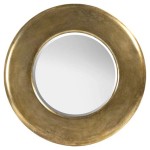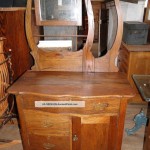Can You Screen Mirror From a Laptop?
Screen mirroring, the act of replicating a device's display on a larger screen, offers significant advantages for presentations, entertainment, and collaborative work. Laptops, given their portability and processing power, are ideal candidates for screen mirroring. This article explores the various methods and technologies for achieving laptop screen mirroring.
Wireless mirroring offers convenience and flexibility. Several established standards facilitate wireless screen mirroring. Miracast, a peer-to-peer wireless screencasting standard, enables direct connection between the laptop and the receiving display. Wi-Fi Direct, a similar technology, allows devices to connect directly without a wireless router. Devices supporting these standards can typically discover and connect to each other automatically.
Another popular wireless option is Chromecast. Developed by Google, Chromecast relies on a small dongle connected to the receiving display's HDMI port. The Chromecast device creates its own Wi-Fi network, allowing the laptop to connect and stream content. While Chromecast primarily focuses on streaming media, many applications also support screen mirroring functionality.
Apple's AirPlay provides a seamless mirroring experience within the Apple ecosystem. Mac laptops can wirelessly mirror their displays to Apple TV or compatible smart TVs. AirPlay utilizes a combination of Wi-Fi and Bluetooth to establish a secure connection and transmit audio and video signals.
DLNA, or Digital Living Network Alliance, is another standard commonly found on smart TVs and media players. DLNA allows devices on the same network to share media content. While not strictly screen mirroring, DLNA can stream photos, videos, and music from a laptop to a compatible display device.
Wired connections offer a reliable alternative, often preferred for scenarios demanding minimal latency or where wireless connectivity is limited. The most common wired connection utilizes an HDMI cable. Most modern laptops feature an HDMI port, enabling direct connection to a TV or monitor. HDMI transmits both audio and video signals over a single cable, providing a simple and effective mirroring solution.
USB-C connections are becoming increasingly prevalent on newer laptops. USB-C ports supporting DisplayPort Alternate Mode can output video signals, enabling direct connection to displays with USB-C or DisplayPort inputs. Some USB-C docks also provide HDMI and other video output options, expanding connectivity further.
Certain older laptops may utilize VGA or DVI connections. VGA, an analog video standard, offers basic video output but does not carry audio signals. DVI, a digital video interface, provides higher quality video output compared to VGA. Adapters can be used to connect these older video outputs to modern displays with HDMI or DisplayPort inputs.
Operating systems play a crucial role in facilitating screen mirroring. Windows 10 and 11 offer built-in wireless display functionality, supporting Miracast and allowing connection to compatible devices. Windows also supports wired connections via HDMI and other video output ports. macOS provides AirPlay for mirroring to Apple devices and supports wired connections using HDMI, USB-C, or Thunderbolt ports.
The specific steps for screen mirroring vary depending on the chosen method and the devices involved. For wireless mirroring, users typically need to initiate the connection from their laptop. The receiving display may need to be placed in pairing mode. For wired connections, simply connecting the appropriate cable usually initiates mirroring. Consulting the device manuals and online resources can provide detailed instructions for specific scenarios.
Several factors influence the performance and quality of screen mirroring. Network bandwidth plays a significant role in wireless mirroring. A strong and stable Wi-Fi connection is essential for smooth and lag-free performance. The processing power of the laptop also influences the mirroring experience. A powerful processor can handle encoding and transmitting the video signal more efficiently. The resolution of the receiving display dictates the maximum resolution of the mirrored content.
Troubleshooting common screen mirroring issues involves verifying compatibility between the sending and receiving devices, ensuring the latest drivers and software are installed, and checking network connectivity. If wireless mirroring experiences lag or interruptions, moving closer to the router or using a wired connection may improve performance. If wired connections fail to establish, checking the cable integrity and ensuring the correct input is selected on the display can resolve the issue.
The choice of mirroring method depends on individual needs and available equipment. Wireless mirroring provides convenience and flexibility, while wired connections offer greater stability and performance. Understanding the available technologies and their respective strengths and weaknesses allows users to select the most appropriate mirroring solution for their specific requirements.
:max_bytes(150000):strip_icc()/Mirror_Laptop__02-0ecd6113552141b69a132d83b77c8ec3.jpg?strip=all)
How To Mirror A Laptop Tv
:max_bytes(150000):strip_icc()/Mirror_Laptop__11-b2b0c43f3ee44e709578b0c697d50fea.jpg?strip=all)
How To Mirror A Laptop Tv

Connecting Laptop To The Tv With Just A Few Simple Steps Resource Centre By Reliance Digital

How To Screen Mirror Stream Laptop Pc Tv Wireless No Adapters

How To Mirror Your Android Screen Pc Laptop

How To Screen Mirror Your Laptop Pc Television Wireless Easy

How To Mirror Your Iphone Screen On A Computer Pcmag

Detailed Guide On Screen Mirroring Laptop To Sony Tv

Screen Mirroring Laptop To Tv Wirelessly

How To Mirror Screen From Laptop Led Tv








